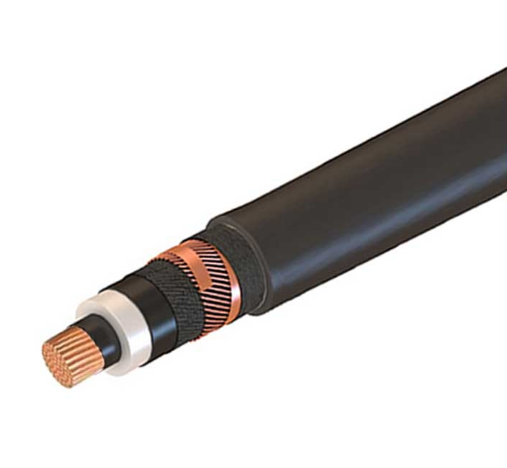- Home
- Products
- Certificates
- Cooperation
- About Us
- News
- Contact
Contact
+86 188 3213 4509
Contact
+86 188 3213 4509
Apr. 15, 2025
Electric cable conductors must be properly insulated from each other and their environment to prevent short circuits. This is achieved by extruding a protective layer of insulation around each conductor.
Among the various insulation options, Polyvinyl Chloride (PVC) and Crosslinked Polyethylene (XLPE) are the two most commonly used materials in the cable industry.
PVC is the most widely used insulation material for power cables due to its balance of cost and performance.
PVC-insulated cables offer the following advantages:
1) Cost-effective electrical and mechanical protection for standard low-voltage building cables
2) Small bending radius, making them easy to install in confined or tight spaces
Typical applications include general low-voltage cabling in lighting systems and public infrastructure.
However, PVC does have certain limitations:
1) A maximum continuous operating temperature of 70°C
2) Limited resistance to water exposure and environmental stress cracking (ESC)

XLPE (Crosslinked Polyethylene) offers a higher maximum operating temperature of 90°C, compared to 70°C for standard PVC. This thermal advantage allows an XLPE-insulated cable to carry a higher current load than a PVC-insulated cable of the same conductor size.
As a result, depending on your current load requirements, using XLPE insulation may allow you to select a smaller cable size without compromising performance.
Additionally, XLPE is a more robust material than PVC, thanks to its cross-linking process, which enhances its resistance to heat, mechanical stress, and environmental factors. XLPE provides greater tensile strength, elongation and impact resistances compared with PVC. This cross-linking process also enhances the material’s resistance to oil and chemicals even at elevated temperature; this makes XLPE a popular pick as insulation for LSZH Flame Retardant or Fire Resistant cables.
Applications for XLPE power cables are therefore popular as main risers in buildings, LSZH flame retardant and fire resistant cables, as well as beyond low voltage applications such as medium to extra high voltage.
PVC provides adequate dielectric strength for low- to medium-voltage applications, ensuring electrical safety across a broad voltage range. Its dielectric loss is moderate, which is acceptable in many residential and commercial wiring scenarios.
Standard PVC compounds support continuous operation up to around 70 °C, with some specialized formulations reaching 105 °C; however, prolonged exposure above 70 °C can soften the insulation, risking deformation and conductor exposure.
PVC insulation offers good flexibility and impact resistance for general installations, but it is less tensile and elongation-resistant compared to XLPE. Its performance can degrade under mechanical stress in harsh environments.
PVC contains chlorine, which can emit toxic hydrogen chloride gas and dense smoke when burned, raising concerns in confined or poorly ventilated spaces. Fire-retardant additives mitigate but do not eliminate these risks.
PVC is one of the most economical insulation materials, making it the default choice for household wiring, appliance leads, and low-voltage cables where extreme conditions are uncommonK..
XLPE boasts high dielectric strength and low dielectric loss, greatly reducing energy waste and the likelihood of insulation breakdown in medium- and high-voltage systems.
Thanks to its thermoset nature, XLPE can sustain continuous temperatures of 90 °C—and up to 125 °C in some formulations—without softening, making it ideal for demanding installations.
With superior tensile strength, elongation, and impact resistance, XLPE resists cracking, abrasion, and water-tree degradation more effectively than PVC, prolonging service life.
As a halogen-free material, XLPE emits minimal toxic gases and smoke when exposed to fire, enhancing safety in tunnels, buildings, and other critical infrastructures.
XLPE is more expensive up-front—often 10–20 % higher than PVC—but its longer lifecycle and superior performance justify the premium in heavy-duty applications such as power distribution, industrial machinery, and substation cabling.
Property | PVC | XLPE |
Dielectric Strength | Moderate, suitable for low voltage | High, ideal for medium–high voltage |
Continuous Temp Rating | Up to 70 °C (105 °C special) | 90–125 °C |
Mechanical Strength | Good flexibility, moderate tensile | Superior tensile, elongation, impact |
Aging & Durability | 25–30 years typical | Extended life, excellent ageing resistance |
Fire Behavior | Toxic, high smoke (chlorinated) | Low smoke, halogen-free |
Cost | Low cost | 10–20 % higher cost |
Applications | Residential, appliance, LV wiring | Power distribution, industrial, MV/HV |
For expert guidance on specifying the best insulation for your project, contact us today—our team of experienced engineers and quality-certified suppliers can help you select and source the optimal PVC or XLPE cable solution from leading manufacturers and suppliers. Whether you need standard building wire or high-voltage power cables, we deliver tailored recommendations to meet your technical, safety, and budgetary requirements.